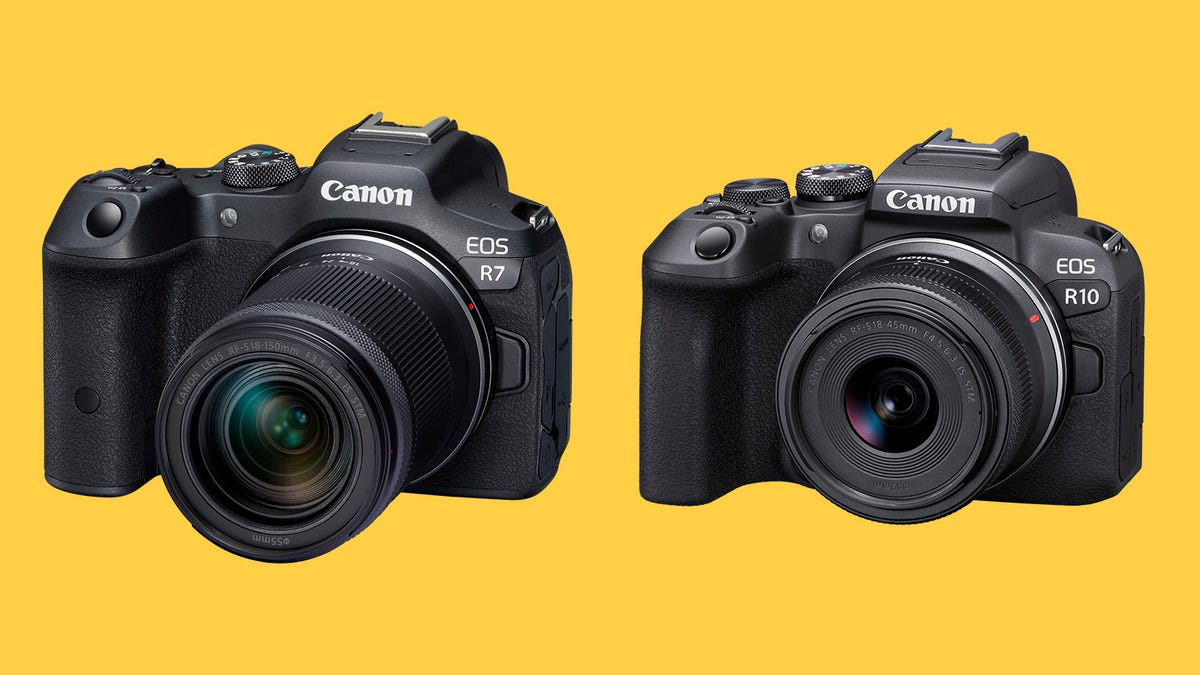New Canon R7 and R10 Cameras Pair RF Lenses with APS-C Sensors
Both mirrorless cameras boast fast burst shooting and 4K video, while the R7 adds in-body image stabilization to the mix

Canon's RF-mount line of mirrorless cameras have so far focused on higher-end models with full-frame image sensors, but the new R7 and R10 models pack smaller APS-C sensors and more approachable price tags. The R10 starts at £900 (body only) when it goes on sale in the UK in July, while the more feature-packed R7 starts at £1,350 when it lands a little earlier in June.
Those prices are a far cry from the £4,300 Canon wants for its professional EOS R5. And while the R7's price is above the £1,050 of the full-frame mirrorless EOS RP, the R7's features -- most notably the higher resolution, faster burst rate and in-body stabilization -- mean the R7 offers a better feature set than the cheaper RP. US pricing has yet to be confirmed, but those UK prices translate to $1,135 and $1,700, respectively.
The R7 is the hero of the pair, packing a 32.5-megapixel image sensor that's capable of shooting 4K video at up to 120 frames per second using the full sensor in Canon's Log-3 mode for easier postproduction. It can shoot full-resolution raw files at up to 15 frames per second with the mechanical shutter or up to 30 frames per second using the electronic shutter.
It also has in-body image stabilization providing up to eight stops of stabilization when paired with a stabilized lens. I've used Canon's IBIS on its more professional EOS R5 mirrorless camera and it's superb, allowing multisecond long exposures without using a tripod. For hand-held video shooters, it's a must-have feature.
The R10 lacks IBIS and Log-3 video shooting but can still achieve up to 23 frames per second raw image shooting from its 24.2-megapixel sensor. It'll do 4K video too, but it uses a crop sensor, meaning tighter framing.
Both models use Canon's RF mount for lenses, which instantly gives them a much wider choice of lenses than are available for Canon's cheaper M-mount series of APS-C cameras like the EOS M50. RF lenses are extremely expensive, however, so this is worth keeping in mind if you're looking towards APS-C cameras as a way of keeping your equipment costs down.
That said, Canon is releasing two RF-mount lenses designed specifically for APS-C sensors, including an 18-45mm f4.5-6.3 and an 18-150mm 3.5-6.3, both of which are image stabilized and will be offered as kit lenses with the cameras in various packages.
I have yet to get my hands on the R7 or R10, but their specs look solid, considering the lower prices. With the physical sizes of the camera bodies being smaller than the EOS R5 -- and much smaller than regular DSLRs like the 7D or 200D -- they could be great options for enthusiastic travel photographers.

